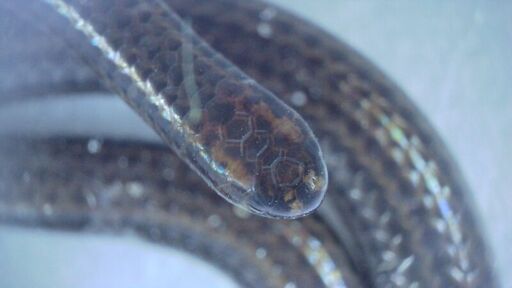“I was making a joke and in my head I said, ‘I smell a threadsnake,'” Justin Springer, Caribbean program officer for the NGO Re:wild, recalled. “I just had a feeling, but I couldn’t be sure because we turned over a lot of rocks before that and we saw nothing.” Springer’s intuition proved correct when his colleague, Connor Blades, pried a rock loose from under a tree root. There, in the soil of central Barbados, they found both an earthworm and the world’s smallest snake. Scientists had been searching for the Barbados threadsnake (Tetracheilostoma carlae) for more than a year. Before this day, the tiny snake, which measures just 7.5-10 centimeters (3-4 inches) long and is about the width of a spaghetti noodle, had not been observed by scientists for 20 years. Barbados threadsnake photographed on a coin in 2005. Image © Blair Hedges, Penn State, via Wikimedia Commons. “Barbados threadsnakes are blind snakes, so they’re very cryptic,” said Blades, a project officer with the Barbados environment ministry, referring to the tendency of blind snakes to spend most of their time underground. “They’re quite rare also, it seems. There have only been a handful of confirmed sightings since 1889, so there are not many people who have ever seen it, unfortunately.” The expedition was conducted in March by the environment ministry and Re:wild as part of the Conserving Barbados’ Endemic Reptiles (CBER) project. On an island where many endemic species have been driven to extinction, finding this rare snake is a…This article was originally published on Mongabay
From Conservation news via this RSS feed


